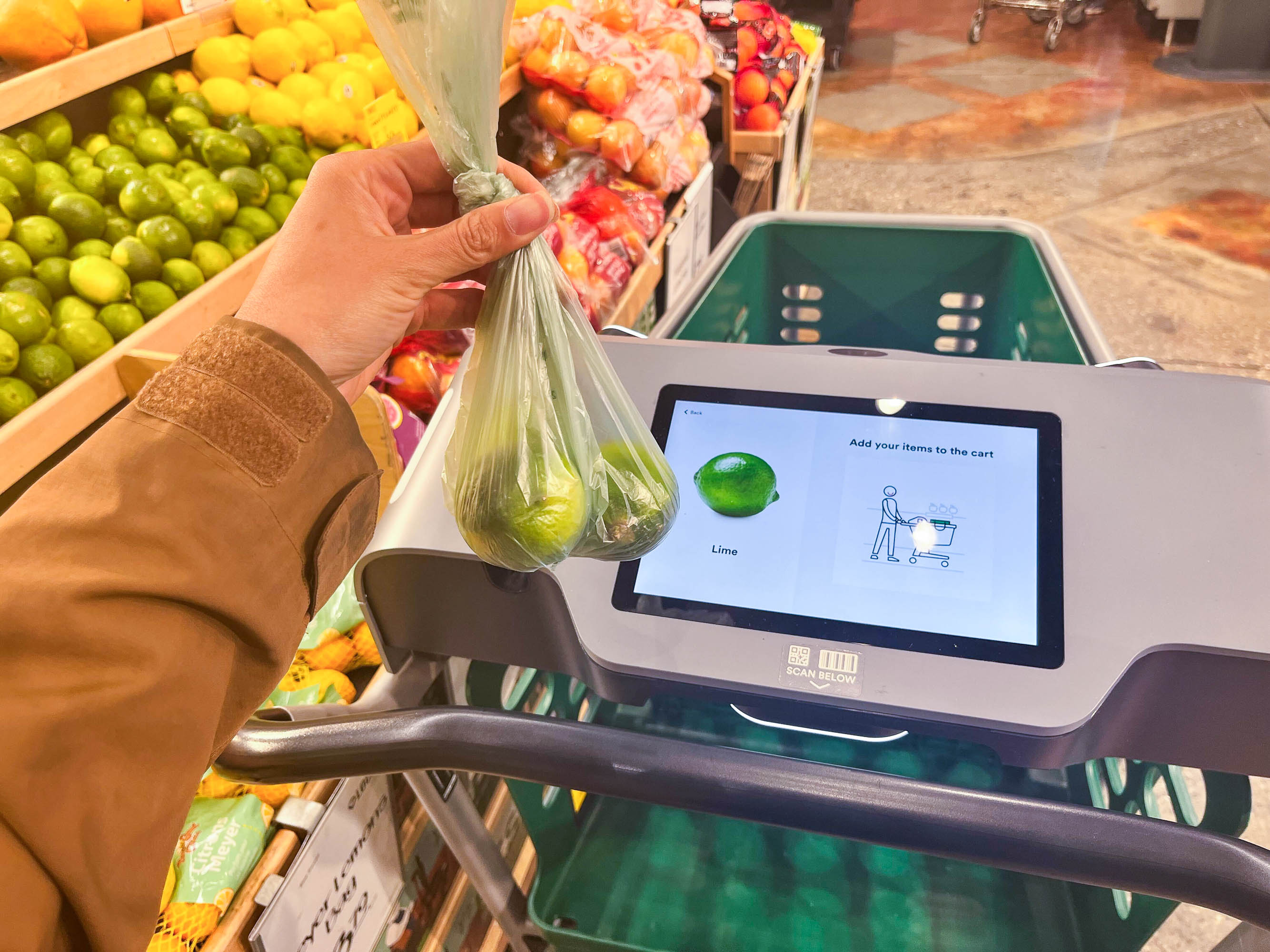As a human who wholeheartedly detests self-checkout robots, I was ready to hate Whole Foods’ new smart shopping carts, which recently appeared at the San Mateo store.
Known as Dash Carts, the bright green behemoths are clunkier than their analog brethren. The carts have an iPad-looking screen, AI-aided cameras and a scanner system that allows shoppers to price items and literally “add to cart” as they walk around the store. Then, like magic, you can roll out to the parking lot along a special lane. That’s right—no more waiting in lengthy Whole Foods checkout lines.
The San Mateo store was the first in California to launch the technology, which is meant to replace Amazon’s contactless “Just Walk Out” checkout system, which was beset by technical issues. However, the concept is part of Amazon’s larger strategy to automate the physical retail experience.
In my experience, though, stationary self-checkout systems often require waving down a store employee when the robot glitches out. It often ends up taking longer than waiting in line for a human cashier, so my initial thought was, "Would this wheelie version actually save me time?”
‘Your cart is experiencing issues’
Naturally, my attempt at using this futuristic shopping method started with a glitch. "Your cart is experiencing issues; try a different cart.”
But these things weigh, like, five times that of a normal cart, by my assessment. So grabbing a working one was far from a breeze.
Once I finally had a working Dash Cart, I found the technology easy enough to use. There was a guest option, but that seemed overly complicated, so I opted to use the Amazon App to connect the cart to my Prime account.
Before I could even enter the store and start smart shopping, I waited 15 agonizing minutes for spotty cell service until a passerby told me the store has Wi-Fi.
The cart has a scanner attached to the handlebars that let you scan items as you put them into it. It was easy to use and didn’t double-scan as easily as the self-checkouts.
For produce, sometimes the cart asks for the quantity. Other times, it asks for the user to place the produce in the cart to determine the weight. At first, I was skeptical about how accurately it could determine the weight with no visible scale in sight, but after a few attempts, I accepted the weight on the screen without much thought.
My impulsive habits often derail my grocery store budget. Chocolate-covered pretzel bites? Don’t mind if I do. However, the smart carts' intuitive cost tallying was incredibly helpful for sticking to a budget.
‘I don’t have to wait in line’
First-time Dash Cart user Suchada Peungtuan, whom I bumped into in the jam aisle with her daughter, found the technology impressive overall, although there was a bit of a learning curve.
"Next time will be more smoother," Peungtuan said. "We had to understand the system."
Others have made using the technology second nature. Fellow shopper Jason Vang picks up a Dash Cart nearly every time he goes to Whole Foods and prefers it to a traditional cart.
"I don't have to wait in line. I just push the cart out," Vang said. "It's very convenient; it's just a little heavy to maneuver, but that's about it."
Then there was the other end of the spectrum. One user I ran into in the parking lot found the process of using the technology so frustrating that she voided her entire purchase.
"We just went through the normal queue," said Nidhi Shah as she pushed the loaded Dash Cart toward her car full of groceries.
The problem was that she had her toddler stowed in the smart cart.
"He kept scanning things," she said. "The cart was also recognizing him as an unidentified object. Every few seconds, I had to hit cancel on that."
As for me? I couldn’t find the button for the rosemary sourdough on the quick menu while I was shopping, so I put it back. Is that good for business? Probably not, but hey, I got out of there without spending my whole paycheck at Whole Foods—and I didn’t have to wait in line.
